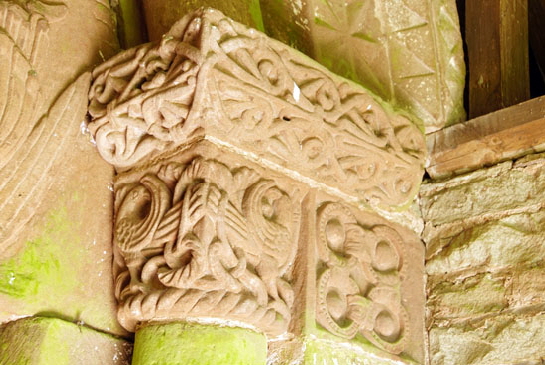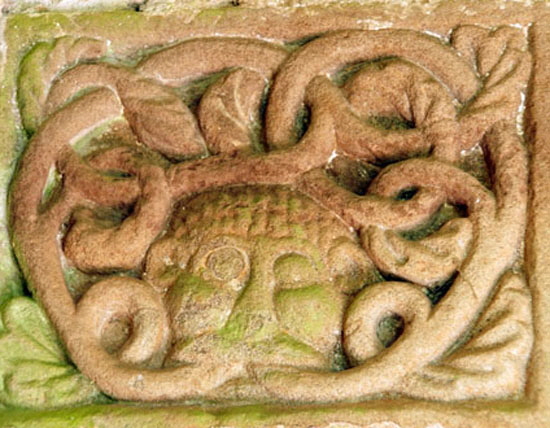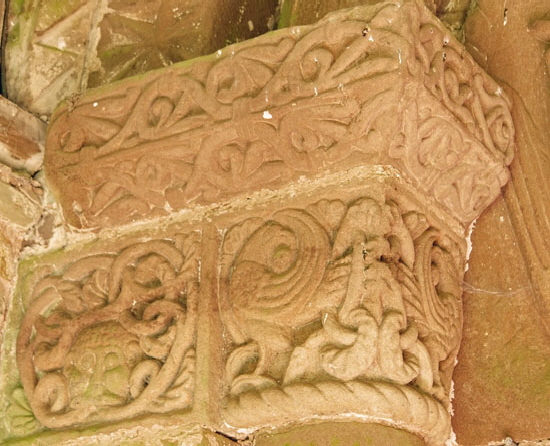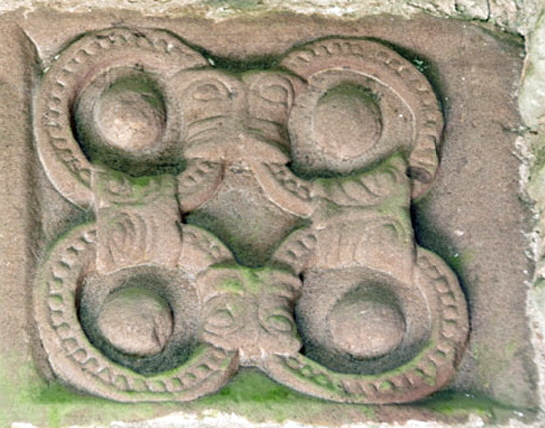|
|
||||||||||||||||||||||||||||||||||||||||||||||||||||||||||
|
Please sign my Guestbook and leave feedback |
||||||||||||||||||||||||||||||||||||||||||||||||||||||||||
|
Recent Additions |
||||||||||||||||||||||||||||||||||||||||||||||||||||||||||
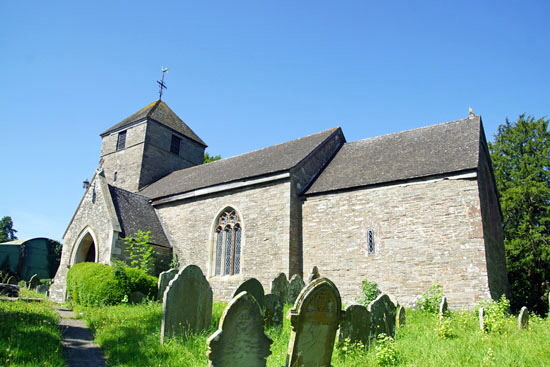 |
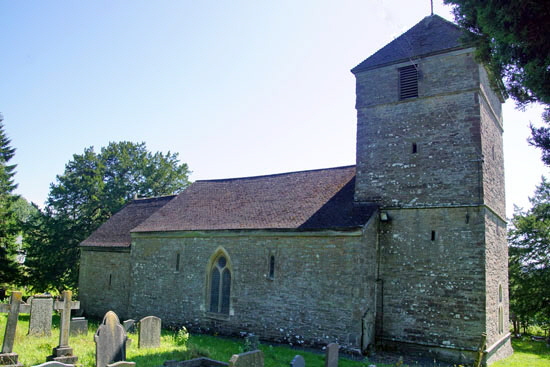 |
|||
|
Left: The church from the south. Note the Norman window in the chancel. Nave and chancel are both Norman but the east wall is a fifteenth century re-build and the west tower late sixteenth. Right: Nave and chancel are both The church from the north. Three Norman windows are on display here. The tiny windows of the two lower sections of the tower belie its comparatively late provenance. |
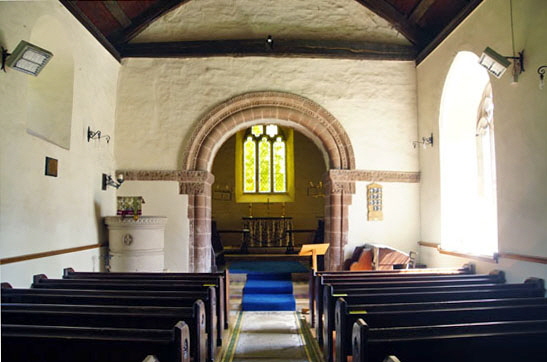 |
|||
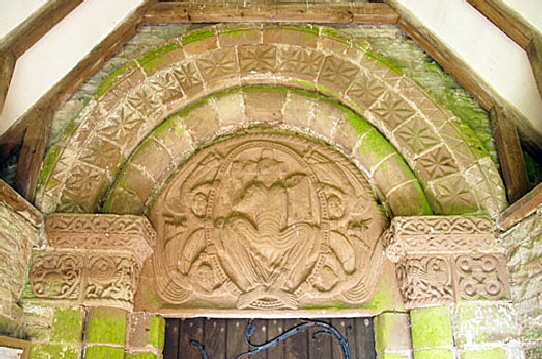 |
|||
|
Left: The south door tympanum and capitals. There are many more pictures below. Perhaps only Yorkshire can field a group of churches that have the jaw-dropping impact of those of the Herefordshire School. It is mostly intact although Christ’s head has suffered somewhat. Although it is the tympanum that makes the immediate impact it is the capitals that have quirky appeal. Right: This is a minimalist church indeed and so your eyes are drawn immediately to the simple chancel arch and its far-from-simple decorated capitals. Note the way the abaci of the capital extend to the nave walls. A Norman window space is visible to the left facing the Perpendicular-style replacement window on the right. |
|
|
||||||||||||||||||||||||||||||
|
Left: On the west capital a face sprouts long tendrils from his mouth. Right: In an altogether more orderly design on the north capital four masks - again of characteristic Herefordshire style - are joined by four circles. |
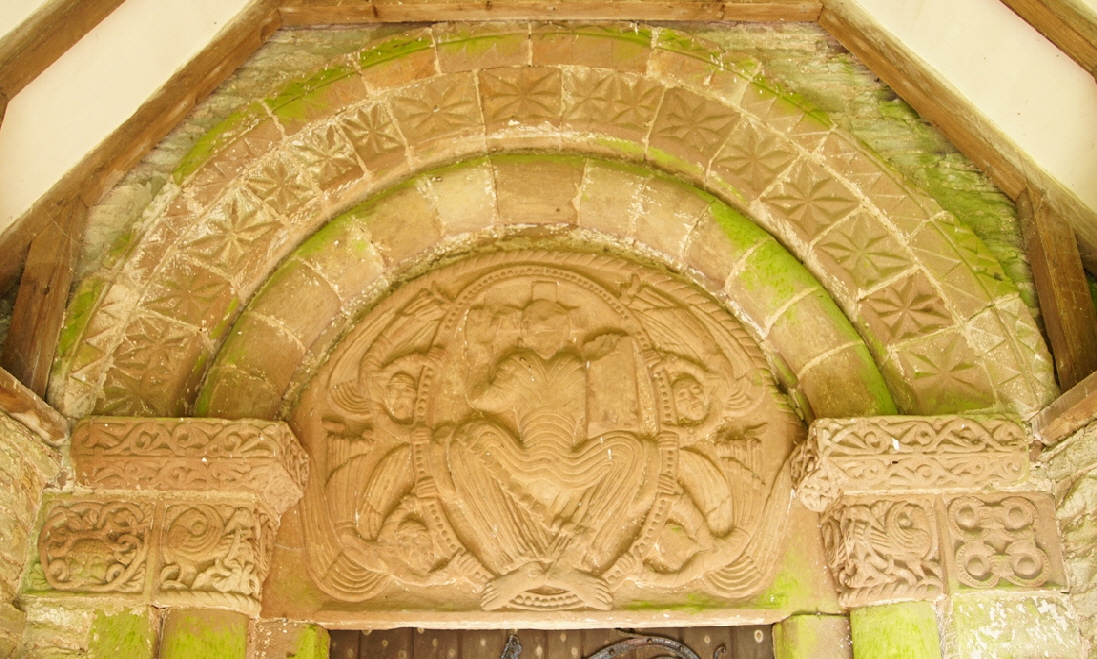 |
|||||||
|
On the tympanum Christ is in majesty and possibly about to “ascend”. His face is somewhat damaged but we can see the crucifix halo behind his head. Four angles cling precariously to the surrounding mandorla with a certain amount of panic on their faces! The sweeping folds of Christ’s rather bizarre lower garment are similar to those seen on other Herefordshire School work, not least the tympanum at Fownhope. |
|||||||
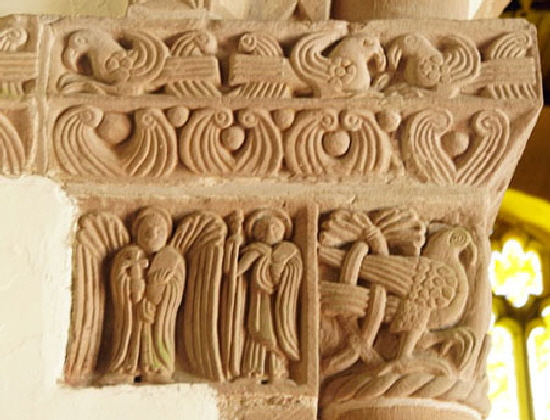 |
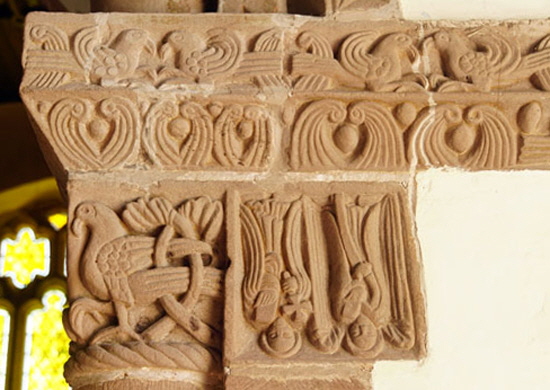 |
||||||
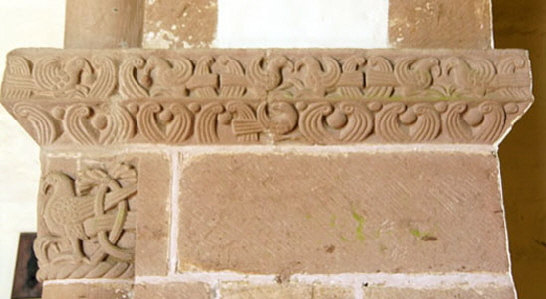 |
|||||||
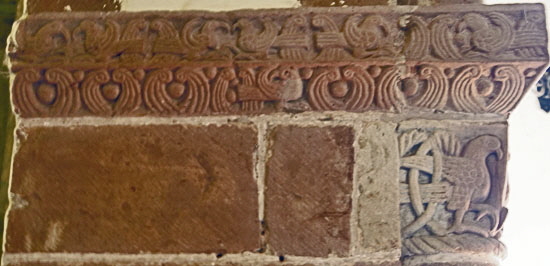 |
|||||||
|
Top Left: The west facing capital on the north side of the chancel arch. At the top is a section of what is effectively a frieze of stylised vegetation and birds that surmounts the capitals and extends to the walls of the nave itself. They are plump little birds but still with those prominent beaks and swept-up wings although the birds face each other rather than sit tail to tail as on the south door capitals. One the capital itself we see a larger bird his wings held more laterally and entangled with vegetation. To its left are two figures. The left hand figure is an angel bearing a cross and a book. To its right is a haloed figure holding a staff. Top Right: Everything on the west face of the south capital mirrors the one opposite with the conspicuous exception that the two figures are upside down! On our left is another figure bearing book and cross but this figure has no wings. To our right an winged angel holds a book and a scroll that hangs down between his legs. This upside down sculpture is taken to be a reference to the inverted crucifixion of St Peter and perhaps implies that at least the larger birds are meant to be the cockerels that crowed four times during Peter’s denial of Christ. Oddly, however, Pevsner took the inverted figures to be a sculptor’s error and opined that “the most baffling thing is that the whole stone was not rejected” For the life of me I can’t see how a sculptor could make such a mistake and not realise that until it was finished. So I think Pevsner surely got it wrong. ”Lower Left and Right (and graphically demonstrating the shortcomings of colour photography in churches): The frieze continues around to the south and north faces of the chancel arch although note the appearance of a stray bird on the lower course of each. Meanwhile larger birds mirror those “around the corner” of the capitals. |
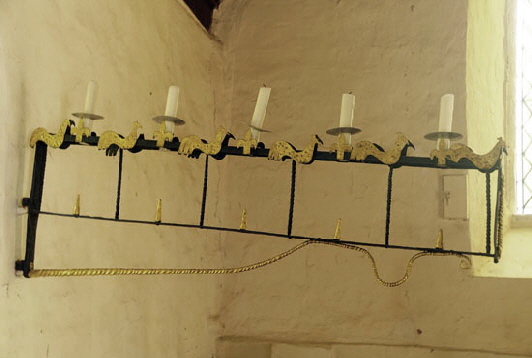 |
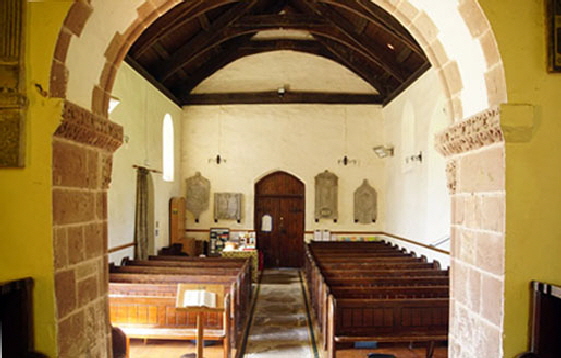 |
||||||||
|
Left: I took this metal candle bracket to be quite modern. Apparently, though, it is late mediaeval so only relatively modern. The cocks are a lovely complement to the sculptures. Right: Looking through the chancel arch towards the west. You can see that there is no decoration at all on the reverse face of the arch. |
|||||||||
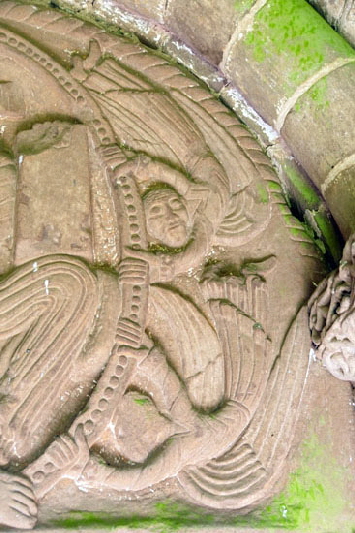 |
|||||||||
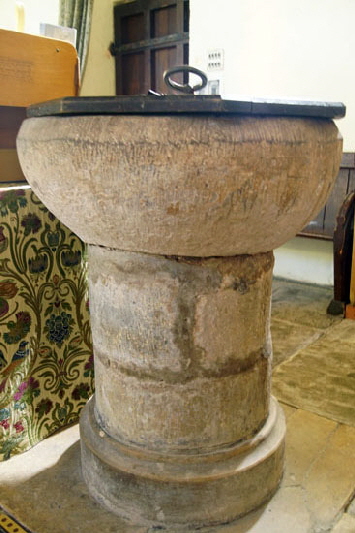 |
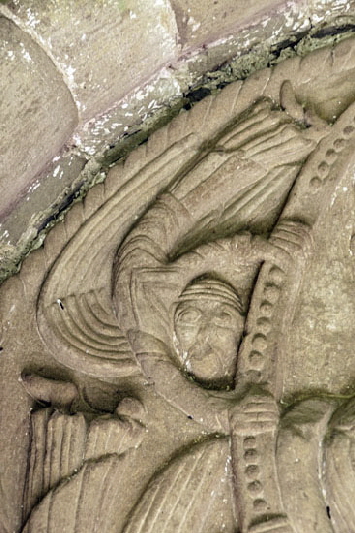 |
||||||||
|
Left: The font is of course Norman but its plainness is quite a counterpoint to the extravagant sculpture elsewhere in the church. Centre and Right: The angels of the tympanum look like they are on a particularly scary white knuckle ride! |
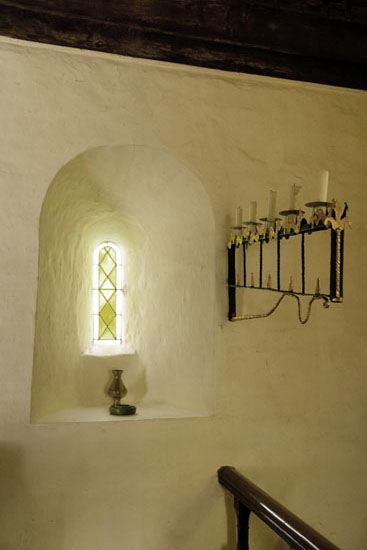 |
|||||||
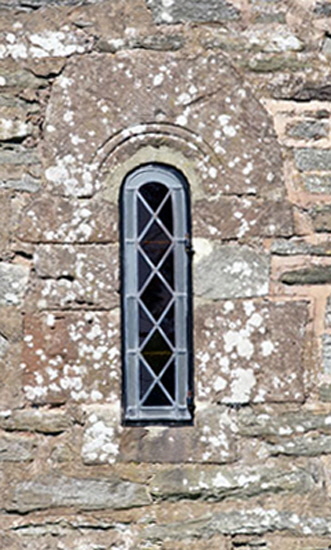 |
|||||||
|
Left: A Norman window showing arch carved from a single piece of stone and huge jamb stones either side. Right: A Norman window from the inside showing the width of the masonry and another view of the now-electrified candelabrum! |
|||||||
|
Click Here to Return to “The World’s Greatest Church Trail III” |
|||||||
